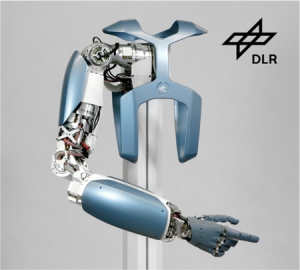Researchers at the German Aerospace Center (DLR) have developed an advanced and strong robotic arm known as the DLR Hand Arm System.
It features an array of synthetic tendons tougher than Kevlar, an anthropomorphic design, a capacitor-based power supply, and ultra-small control electronics. It comes packed with 52 motors. The inventive actuators and joints absorb and dissipate energy in order to withstand collisions.
 DLR Hand Arm System
DLR Hand Arm System
The lead designer of the Hand Arm System, Markus Grebenstein, stated that robustness is key factor to be considered for deploying service robots in reality, where collisions can occur frequently. He added that even small vibrations can cause damage to conventional robots, which depend on motors attached to robot’s joints in mechanically stiff models.
The researchers have remodeled the design of actuators and robotic joints in the Hand Arm System. They have designed complex shock-absorbing structures called as floating spring joints for the upper arm. These complex structures feature two cam disks attached to a spring, which aids in dampening vibrations and dissipating energy. Unlike conventional robots, this system utilizes robot joints with two motors. One motor is used to move the joint effectively and the smaller one is used to vary the joint’s stiffness. Both the motors are interfaced using a harmonic drive gear.
The hand consists of 38 tendons and each tendon is linked to an individual motor. Two motors are responsible for articulating each finger. The tendons are manufactured from a tough synthetic fiber called Dyneema, which offers a nonlinear, spring-based elastic mechanism. It allows the fingers to accumulate and discharge energy, just like human hands.